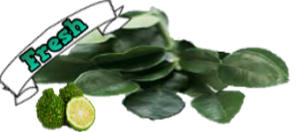Cookbook: Thai Food
 Renowned chef David Thompson first went to Thailand by mistake: a holiday plan had to be changed at the last minute, and he ended up in Bangkok, where he was seduced by the people, culture, and cuisine. Since that fateful trip some 20 years ago, Thailand has become David’s second home. Working alongside cooks who perfected their craft in the Thai royal palaces, he began to document the traditional recipes and culinary techniques that have been handed down from generation to generation. The result is THAI FOOD, the most comprehensive account of this ancient and exotic cuisine ever published in English. David writes about Thailand and its food with an easy erudition, encouraging readers to cook and experiment, while simultaneously fostering a respect for the food and its stewardship through the ages. Although all the classic, well-loved recipes are here, this magnum opus features hundreds of lesser-known but equally authentic and delicious Thai dishes that will inspire cooks to go beyond green curry chicken and Thai fish cakes. David’s passion and conviction are infectious; complemented by Earl Carter’s superb photography, THAI FOOD captures all aspects of the dynamic Thai culture and cuisine.• Ten years in the making, this groundbreaking work is one of the cookbook publishing events of the decade.• The author’s London restaurant, nahm, received a Michelin star in 2002, making it the first Thai restaurant to receive such an honor.• Photographed at David’s restaurants in Sydney and London, and on location in Thailand, Earl Carter’s superb images capture both the essence of Thai food and its rich cultural milieu.  Awards2003 James Beard Award Winner2003 IACP Award WinnerReviews“Stands out, dauntingly massive, brilliantly magisterial, and, at the same time, bustling with charm, observations, life.†—Saveur “[S]et a new standard for Asian cookbooks.â€â€”Saveur (Top 100 Home Cook Edition)
Renowned chef David Thompson first went to Thailand by mistake: a holiday plan had to be changed at the last minute, and he ended up in Bangkok, where he was seduced by the people, culture, and cuisine. Since that fateful trip some 20 years ago, Thailand has become David’s second home. Working alongside cooks who perfected their craft in the Thai royal palaces, he began to document the traditional recipes and culinary techniques that have been handed down from generation to generation. The result is THAI FOOD, the most comprehensive account of this ancient and exotic cuisine ever published in English. David writes about Thailand and its food with an easy erudition, encouraging readers to cook and experiment, while simultaneously fostering a respect for the food and its stewardship through the ages. Although all the classic, well-loved recipes are here, this magnum opus features hundreds of lesser-known but equally authentic and delicious Thai dishes that will inspire cooks to go beyond green curry chicken and Thai fish cakes. David’s passion and conviction are infectious; complemented by Earl Carter’s superb photography, THAI FOOD captures all aspects of the dynamic Thai culture and cuisine.• Ten years in the making, this groundbreaking work is one of the cookbook publishing events of the decade.• The author’s London restaurant, nahm, received a Michelin star in 2002, making it the first Thai restaurant to receive such an honor.• Photographed at David’s restaurants in Sydney and London, and on location in Thailand, Earl Carter’s superb images capture both the essence of Thai food and its rich cultural milieu.  Awards2003 James Beard Award Winner2003 IACP Award WinnerReviews“Stands out, dauntingly massive, brilliantly magisterial, and, at the same time, bustling with charm, observations, life.†—Saveur “[S]et a new standard for Asian cookbooks.â€â€”Saveur (Top 100 Home Cook Edition)This collection of Thai cooking lore, history and recipes can be as daunting as it is comprehensive. A description of the country, its various socioeconomic groups (called muang) and its culinary history is lengthy and perhaps a little too in-depth. While Thompson’s enthusiasm for his subject is palpable, readers may be anxious to get to the actual recipes, but the first one does not appear for nearly 200 pages, after an essay on Thai superstitions and a glossary of ingredients such as bai yor, a tobacco-like plant, and dried lily stalks. The recipes are thorough and authentic, and while they call for many items that may be hard to find, Thompson good-naturedly provides alternatives to most of them. Thailand’s signature strong flavors are in evidence in dishes such as Bream Simmered with Pickled Garlic Syrup and a Salad of Pork, Young Ginger and Squid. Recipes are divided sensibly into soups, curries, salads and the like, but one chapter simply titled “Menus” contains various dishes that work together to form a traditional Thai meal (menus such as one that includes Prawn and Lemongrass Relish; Egg Mousse with Pineapple, Corn and Salted Duck Eggs; and Deep-Fried Bean Curd with Crab, Pork and Spring Onions are intriguing). A chapter on snacks and street foods offers additional tasty choices such as Rice Cakes with Chili, Prawn and Pork Sauce and Egg Nets, lacy crˆpe-like wrappers created by drizzling beaten egg into a hot wok that are stuffed with a pork and shrimp mixture. The dessert chapter also provides instructions for creating Smoked Water, flavored using a special candle with a wick on both ends.

Thanks for letting me know.